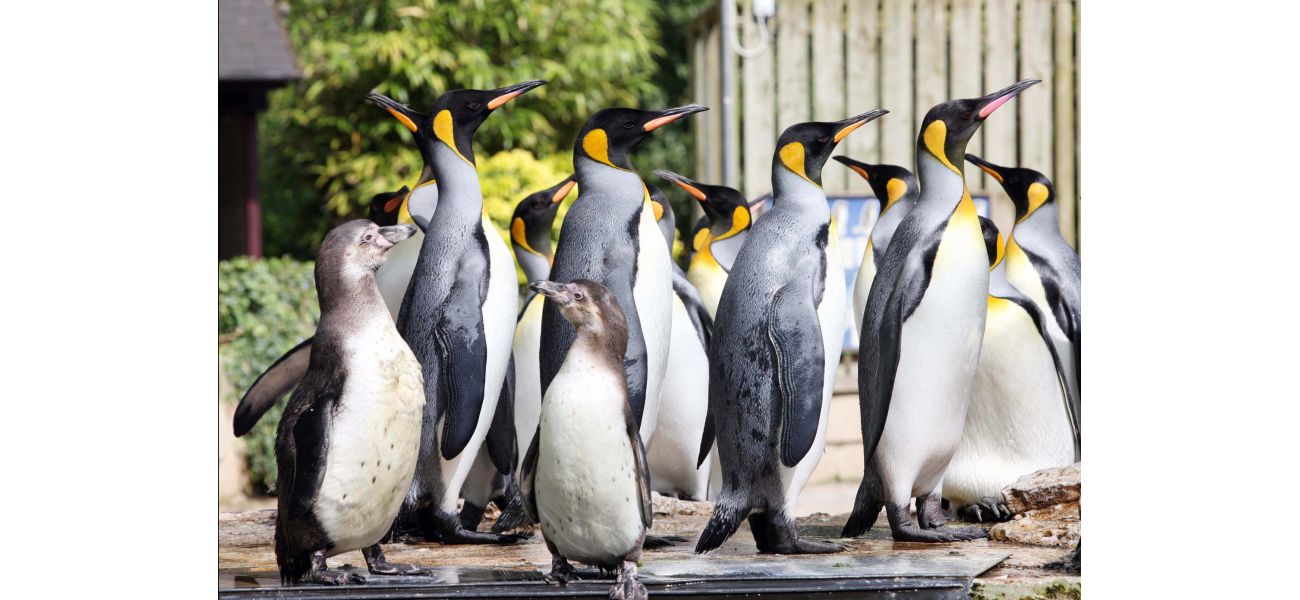A penguin that was incorrectly identified as male for eight years has now been renamed 'female'.
They had a feather from Maggie tested, the results confirmed that Maggie was a male bird.
December 2nd 2024.

After living for ten years as 'Maggie', a penguin residing in a park in Gloucestershire has recently been confirmed to be a male. This discovery came as a surprise when the ten-year-old king penguin made a flirty move towards another penguin, leading zookeepers to investigate further. It is a common trait for male penguins to make the first move, so when 'Maggie' showed interest in fellow penguin, Frank, the zookeepers were taken aback.
Curiosity led the zookeepers to send one of 'Maggie's' feathers for testing, and the results confirmed their suspicions - 'she' was actually a male penguin. After a decade of being referred to with the wrong pronouns, the zookeepers are now happily calling him 'Magnus'. In other penguin-related news, a malnourished emperor penguin was discovered thousands of miles away from its home in Antarctica, leaving wildlife experts baffled.
The adult male, who has been nicknamed Gus, was found on a beach in Denmark, Australia - a staggering 2,200 miles away from the Antarctic coast where emperor penguins are typically found. According to the state of Western Australia’s Department of Biodiversity, Conservation and Attractions, this is the first time a penguin of this species has ever been reported in Australia. Even University of Western Australia research fellow, Belinda Cannell, was surprised by this rare occurrence and has no explanation as to why Gus ended up in Denmark.
Gus stands at an impressive 3.2 feet tall and weighed 51 pounds when he was discovered. To put that into perspective, a healthy male emperor penguin can weigh over 100 pounds. In a similar discovery, scientists from the British Antarctic Survey found four new colonies of emperor penguins by following their massive trails of poop on the ice. Using satellites, they were able to capture images of these previously unknown breeding sites. It just goes to show that there is still so much to learn about these fascinating creatures and their behaviors.
Curiosity led the zookeepers to send one of 'Maggie's' feathers for testing, and the results confirmed their suspicions - 'she' was actually a male penguin. After a decade of being referred to with the wrong pronouns, the zookeepers are now happily calling him 'Magnus'. In other penguin-related news, a malnourished emperor penguin was discovered thousands of miles away from its home in Antarctica, leaving wildlife experts baffled.
The adult male, who has been nicknamed Gus, was found on a beach in Denmark, Australia - a staggering 2,200 miles away from the Antarctic coast where emperor penguins are typically found. According to the state of Western Australia’s Department of Biodiversity, Conservation and Attractions, this is the first time a penguin of this species has ever been reported in Australia. Even University of Western Australia research fellow, Belinda Cannell, was surprised by this rare occurrence and has no explanation as to why Gus ended up in Denmark.
Gus stands at an impressive 3.2 feet tall and weighed 51 pounds when he was discovered. To put that into perspective, a healthy male emperor penguin can weigh over 100 pounds. In a similar discovery, scientists from the British Antarctic Survey found four new colonies of emperor penguins by following their massive trails of poop on the ice. Using satellites, they were able to capture images of these previously unknown breeding sites. It just goes to show that there is still so much to learn about these fascinating creatures and their behaviors.
[This article has been trending online recently and has been generated with AI. Your feed is customized.]
[Generative AI is experimental.]
0
0
Submit Comment





